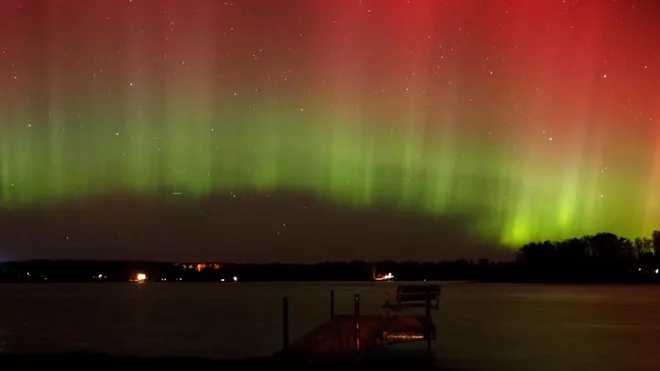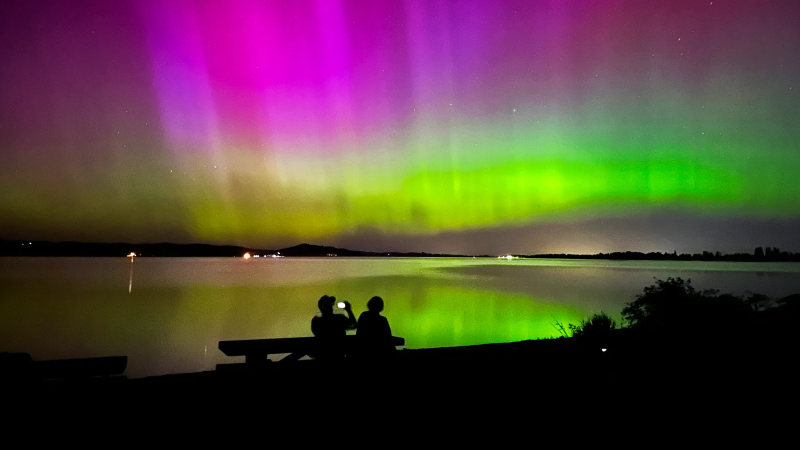Red and green swirls of northern lights captured dancing in Minnesota sky: Video
A photographer in Minnesota was able to capture video of a mesmerizing northern lights display as swirls of red and green danced across the night sky.
Another geomagnetic storm made the colorful phenomena known as aurora borealis visible during the weekend across the Midwest region of the United States, and Carol Bauer was there to document it Sunday in Grand Marais.
“My husband and I traveled to Grand Marais to see the fall colors and were thrilled to get a great view of the northern lights too,” Bauer told Storyful.
Bauer is among millions of Americans who should expect to have more opportunities in the coming months to catch the striking display as the sun reaches the height of its 11-year cycle.
Watch the video Carol Bauer captured of the Northern Lights:
Northern lights visible across Midwest

Last week, a massive solar flare accompanied by coronal mass ejections – clouds of plasma and charged particles – made their way toward our planet, driving a geomagnetic storm that made the auroras visible in multiple northern U.S. states.
Though the the natural light display in Earth's sky is famously best seen in high-latitude regions of the northern and southern hemispheres, the northern lights became visible during the weekend across the U.S. In addition to Minnesota, the stunning display of rays, spirals and flickers could be seen in places along the U.S.-Canada border and even as far south as Oregon and Pennsylvania, according to the National Oceanic and Atmospheric Administration's Space Weather Prediction Center.
Peak northern lights activity:What to know as sun reaches solar maximum
Peak aurora activity to coincide with height of solar cycle
Fortunately for aurora chasers, there will be far more opportunities to catch the northern lights soon.
Electromagnetic activity is increasing as the sun continues to reach the height of its 11-year solar cycle, which NASA said is expected to be in 2025.
As the sun reaches the peak of Solar Cycle 25, sunspots located in regions of intense magnetic activity should increase, according to the National Oceanic and Atmospheric Administration. When that magnetic activity is released, it creates intense bursts of radiation resulting in solar flares hurtling toward Earth at the speed of light.

Some of these flares can be accompanied by coronal mass ejections that emerge from the sun's outermost atmosphere, the corona.
These ejections can collide with Earth’s magnetosphere, the barrier protecting humanity from the harshest impacts of space weather, to produce geomagnetic storms that unleash spectacular views of the northern lights in parts of the country where auroras are not often visible.
Eric Lagatta covers breaking and trending news for USA TODAY. Reach him at elagatta@gannett.com
Disclaimer: The copyright of this article belongs to the original author. Reposting this article is solely for the purpose of information dissemination and does not constitute any investment advice. If there is any infringement, please contact us immediately. We will make corrections or deletions as necessary. Thank you.




